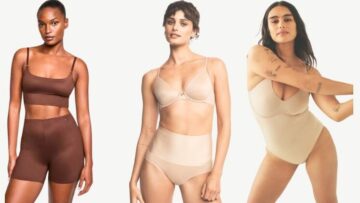It’s a tough target but not impossible, states Anant Tanted, Founder and CEO, The Indian Garage Co. Twelve years ago, a young and driven Anant, only 23-year-old at the time, embarked on an ambitious journey to create his own apparel brand. Armed with a loan of Rs. 10 lakh from a government scheme, he laid the foundation of The Indian Garage Co. (TIGC) in a modest office space in Koramangala, Bengaluru, with just four team members. Fast forward to today and TIGC stands tall as a powerhouse in the fashion industry. It clocked a gross merchandise value (GMV) of Rs. 300 crore in FY ’23 and expects to double it to Rs. 600 crore in FY ’24. Operating under the ‘House of Brands’ format, the company has three brands under its umbrella: TIGC (menswear), Freehand (womenswear) and Hardsoda (men’s plus-size brand). Recently, it received a funding of Rs. 155 crore from TMRW, an e-commerce roll-up venture owned by the Aditya Birla Group. In a freewheeling chat with Apparel Resources, Anant shares insights into design influences, the streetwear market’s growth, the future of the apparel market and more.
AR: Could you share your journey so far and highlight the key achievements along the way?
AT: As the founder of TIGC, the journey has been exhilarating and full of challenges, but ultimately incredibly rewarding. TIGC was born out of the desire to cater to the unique fashion preferences and sensibilities of Generation Z in India. We noticed an imminent gap in the market for trendy and affordable clothing options tailored specifically for this demographic. Accordingly, we invested significant time and effort in developing a strong brand identity and a powerfully attractive range of clothing. From our logo and colour palette to our messaging and brand voice, every aspect of TIGC has been carefully curated to appeal to our target audience. Despite the fierce competition, we’ve managed to carve out a niche for ourselves in the Indian fashion market.
AR: How does TIGC differentiate itself in the market and what unique value propositions does it offer?
AT: TIGC stands out in the market through its unique blend of trendy and affordable fashion, tailored specifically for Generation Z consumers in India, influenced by streetwear culture, music, art and pop culture. TIGC also recognises the importance of affordability, especially for young consumers. Our products are competitively priced, making them accessible to a wider range of audience without compromising on quality or style of fashion. This commitment sets us apart from other fashion brands that often come with a higher price tag for their products. We also actively engage with our audience through social media, events and interactive campaigns to foster a connection beyond just transactional interactions. This also creates a space for us where we understand changing customer fashion trends as well as build long-lasting relationships and loyalty with them.
AR: What percentage of your business revenue comes from men’s products and from women’s products?
AT: Around 90 per cent of our business revenue comes from men’s products and 10 per cent of it comes from women’s products. However, the ratios will completely change from FY ’24-25 as we expand Freehand in a big way. Freehand is the exclusive womenswear clothing range of TIGC.
AR: Leveraging an omnichannel strategy has become a trend amongst D2C companies. How do you see this approach contributing to the overall growth and customer engagement for The Indian Garage Co.?
AT: I believe that by seamlessly integrating online and offline channels, we can create a cohesive and immersive shopping experience for our customers. Through our online platform, we can reach a wider audience, offer convenience through features like online ordering and home delivery and provide personalised recommendations based on browsing and preferences. Although our physical stores are not active yet, we’re hopeful that 2024 would be the year to start physical stores to serve as touchpoints for customers to interact with our products first-hand.
AR: How does TIGC stay attuned to the fast-changing preferences of consumers and ensure that your product offerings align with current market trends?
AT: First and foremost, we prioritise regular market research to gain insights into the latest trends, consumer preferences and evolving industry dynamics. This involves monitoring social media trends, analysing competitor offerings and actively seeking feedback from our customers through surveys. By leveraging these diverse sources of information, we create a well-rounded understanding of the market landscape.
Our product development process is characterised by agility and responsiveness. This allows us to swiftly adapt to changing trends and consumer preferences. Close and constant communication with our design team, manufacturers and suppliers enhances our ability to efficiently source materials and produce new designs. This collaborative approach ensures that our product line-up remains flexible and is able to meet the evolving demands of our customer base.
In addition to traditional methods, we leverage external fashion research tools to analyse what’s trending currently and our in-house retail technology, ‘Chanakya’, enables us to assess consumer preferences and forecast demand accurately.
As for determining the quantity to order, we employ sophisticated data analytics tools that analyse historical sales data, market trends and customer behaviour.
AR: The launch of ‘TIGC Street’ by The Indian Garage Co. marks an entry into the streetwear segment. Could you provide insights into how streetwear differs from casualwear and activewear?
AT: The launch of ‘TIGC Street’ by The Indian Garage Company not only signifies a strategic foray into the burgeoning streetwear segment in India but also aligns seamlessly with the evolving preferences of the country’s fashion-forward youth. The streetwear phenomenon, currently surging in popularity, is characterised by its distinctive silhouettes, fabrics, accessorisation and techniques that set it apart from casualwear and activewear.
In terms of silhouettes, streetwear embodies a laidback and effortlessly cool aesthetic, often drawing inspiration from urban culture and sportswear. Loose and oversized styles, such as baggy hoodies, oversized T-shirts and relaxed-fit pants, contribute to its signature look. This stands in stark contrast to casualwear, which typically features more classic and tailored silhouettes, ranging from jeans and polo shirts to simple dresses. Activewear, on the other hand, prioritises functionality with fitted and streamlined silhouettes designed to enhance movement during physical activities.
The choice of fabrics further differentiates these categories. Streetwear incorporates a mix of high-quality materials like denim, fleece and jersey, often featuring bold prints and unique textures that give it a distinctive edge. Casualwear, focusing on comfort and versatility, employs diverse fabrics such as cotton, linen and knit materials, emphasising softness and breathability. Activewear, designed for performance, relies on technical fabrics like moisture-wicking materials, spandex and breathable synthetics to support physical activity.
Accessorisation is a key element defining these styles. Streetwear embraces bold accessories like oversized hats, chunky sneakers and statement jewellery, often featuring prominent logos and branding. Casualwear takes a more understated approach with classic accessories like belts, scarves and versatile footwear contributing to a relaxed yet polished look. In activewear, functional accessories such as sports watches, moisture-wicking hats and performance sneakers play an integral role, chosen for their practicality and support during physical activities.
Techniques used in garment construction further emphasise the distinctions. Streetwear embraces various printing techniques, including screen printing and embroidery, to create bold graphics and logos. Distressing and unconventional dyeing methods are common. Casualwear focuses on traditional garment construction techniques, emphasising quality stitching and finishing, often incorporating a mix of colours and patterns in a more subdued manner. Activewear utilises advanced construction techniques like seamless construction, flatlock stitching and strategic ventilation to enhance performance and durability.
AR: What are your future plans?
AT: We have set a target of achieving a revenue of Rs. 1,000 crore in the next three years. This is a tough target but not impossible with the key strategies we are looking to work further on in the next three years. We want to expand our product range to cater to a wider audience and capitalise on the emerging trends. This includes introducing new clothing lines, accessories and lifestyle products that appeal to our target demographic.
TIGC will also be scaling its presence in existing markets while also exploring opportunities for geographical expansion. This may involve opening new retail outlets, expanding our online presence and entering into strategic partnerships to reach untapped markets. Leveraging an omnichannel approach will also
be a crucial factor to create a seamless shopping experience for our customers. By integrating our online and soon-to-be offline channels, we can maximise convenience, accessibility and customer engagement.
As usual, prioritising customer experience will always be our main factor to drive repeat purchases and foster loyalty. This involves delivering exceptional service to customers, personalising recommendations for their shopping experience and creating seamless interactions across all touchpoints for them.
AR: How do you see the future of the Indian apparel market in the next five years or so?
AT: India is on its trajectory to becoming the third-largest economy and is witnessing a surge in consumer activity, with more people purchasing goods in the country. The influence of Generation Z, particularly the young demographic, is notably shaping consumer trends and preferences.
Moreover, the Indian apparel market is on the cusp of a transformative journey in the next five years. Technological advancements are propelling a substantial shift towards online retail, offering consumers unprecedented convenience and accessibility. This trend is set to redefine the way people engage with and purchase apparel.
Customisation and personalisation are taking centre stage as consumers increasingly seek unique, tailored experiences. This shift in preferences is not merely a trend but a driving force shaping the industry.
In this evolving landscape, Direct-to-Consumer (D2C) brands are disrupting traditional retail channels, establishing direct connections with their audience. Beyond streamlining the supply chain, this approach enables brands to cultivate deeper relationships with customers, fostering brand loyalty in an intensely competitive market.
Moreover, the industry is undergoing a significant cultural shift towards inclusivity and diversity. Brands are actively championing representation and catering to a broader spectrum of body types and identities. This commitment reflects the evolving societal values and acknowledges the diverse preferences and needs of the consumer base. With these dynamic changes on the horizon, the future of the Indian apparel market promises to be vibrant, diverse and exceptionally exciting.








